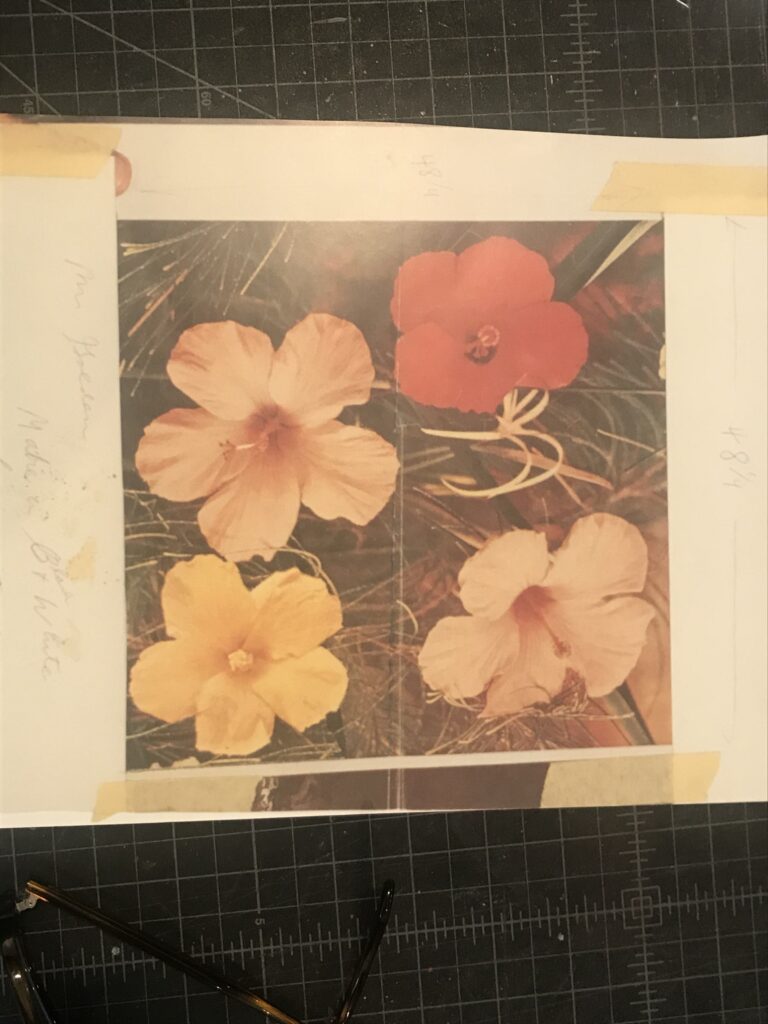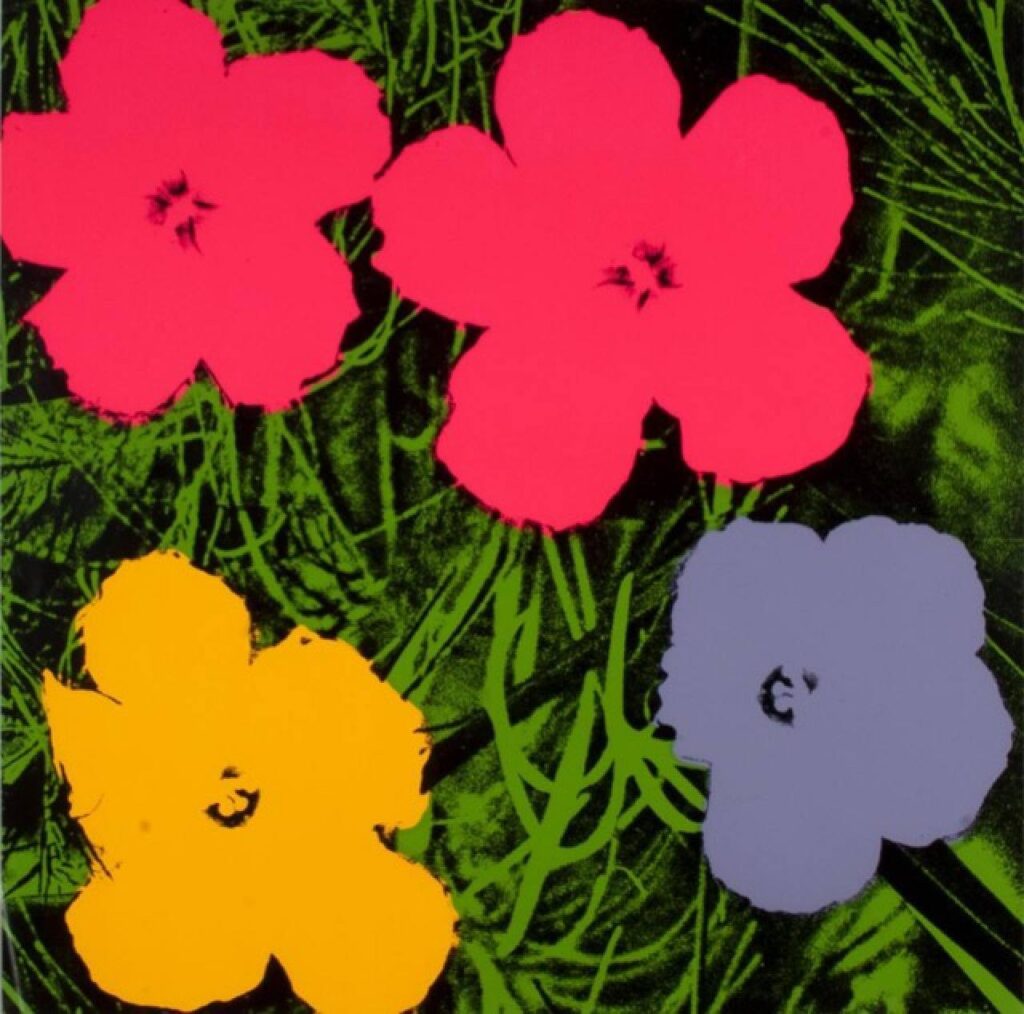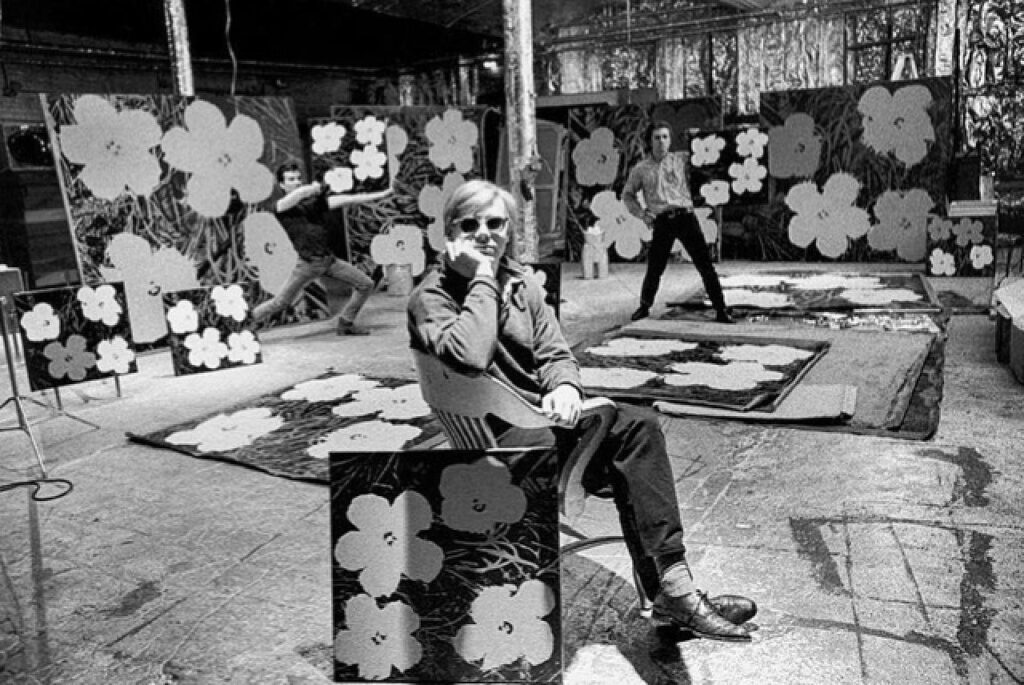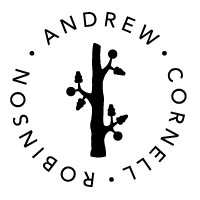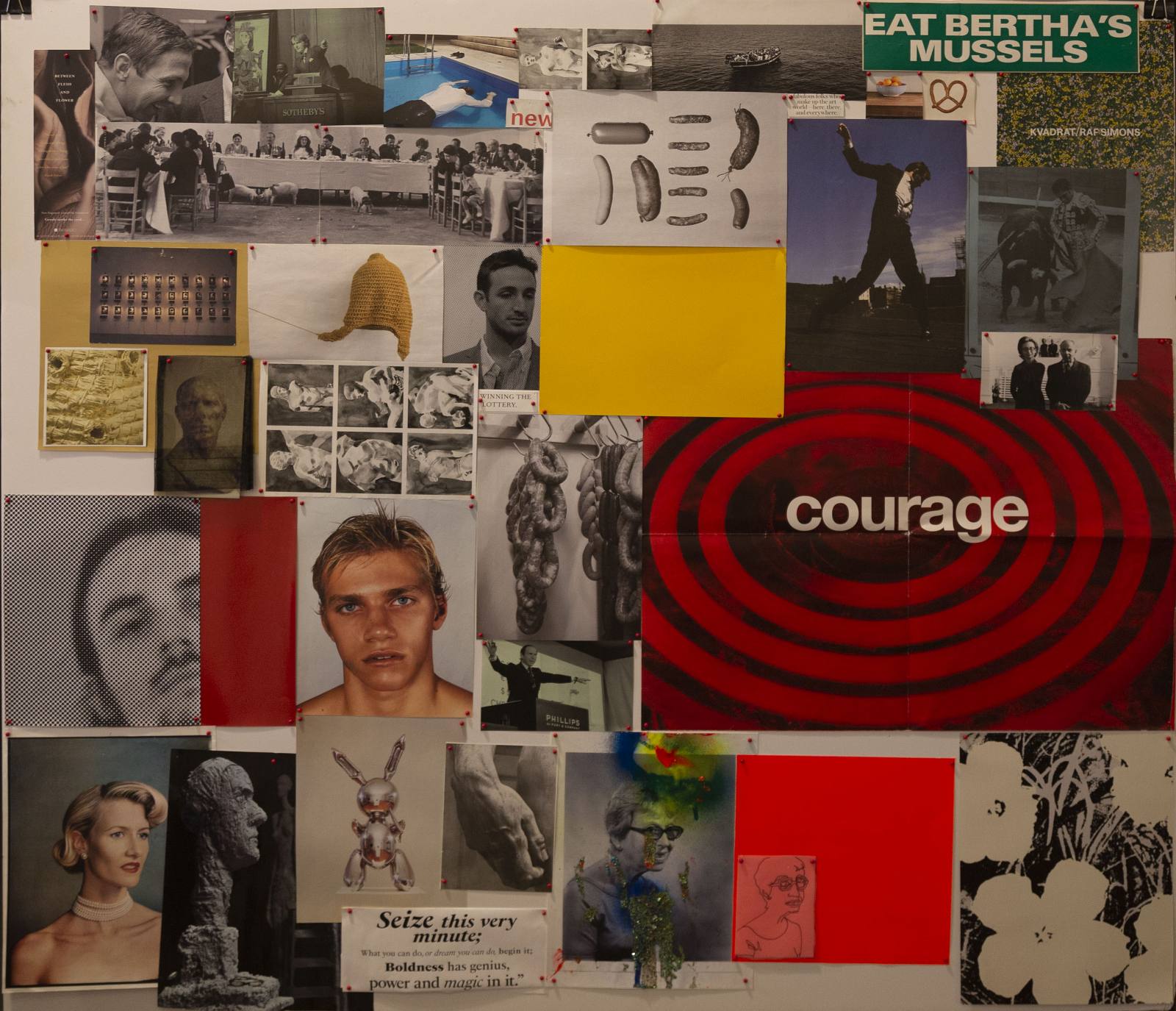At the start of a project I often begin by creating a mood board. Mood boards are an excellent tool for designers to clarify a design idea and “feeling” through a coherent visual vocabulary. It is also a great tool to help convey an idea visually to an audience (client, collaborators, etc.). For example take a look at the pin up wall created by Scholten and Baijings. I was fortunate to meet Carole Baijings and hear her talk about the creative process in their “atelier-way-of-working.” Collage and color plays a significant role in their material rich creative development process. The production of allot of material and visual studies generates new ways of envisioning form and surface designs.
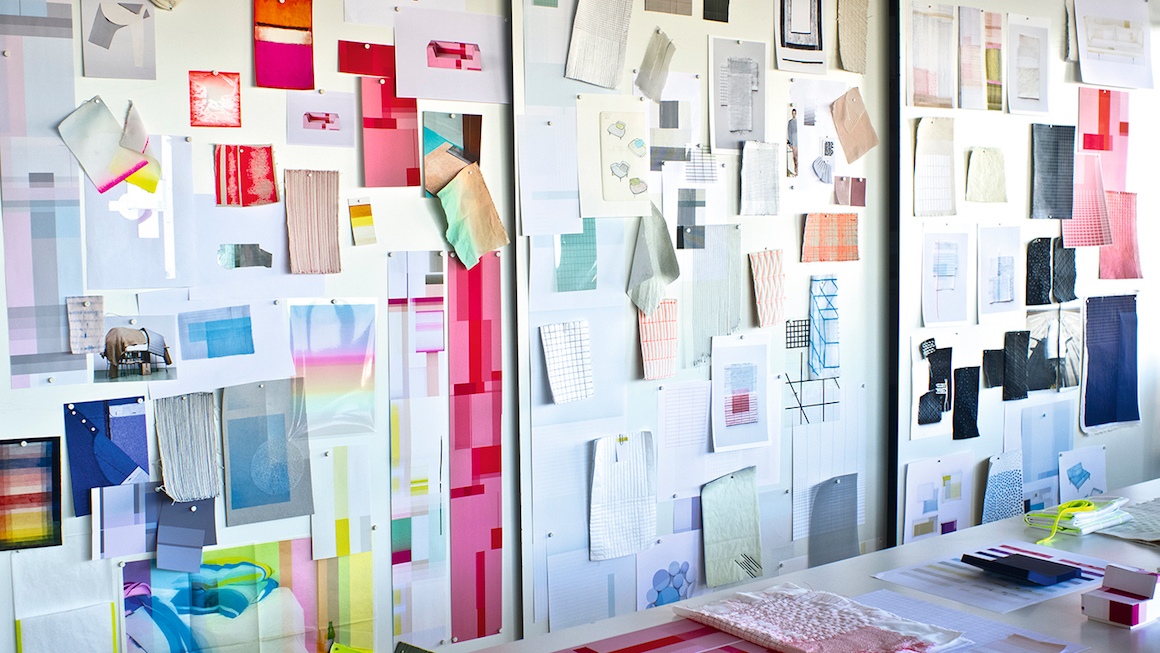
Artists, designers, and makers of all stripes have a lot of different tools and techniques to help brainstorm ideas at the beginning of a project. Some tools that help clarify concepts, and the look and feel of an initial idea include design methods such as Mind Maps, Framing Questions, and Mood Boards.
Mind Mapping
The mind map is an intuitive concept development method created around a central idea. It typically takes the form of a diagram representing words and images, arranged around a subject with ever-expanding branches that lead to free association of related words and ideas.
A mind map may help in organizing a haphazard collection of related ideas into a clearer direction for a project. When I don’t know where to begin, I often use this exercise to help me choose a path to take. www.mindmapping.com I typically do this exercise on a blank page in my sketchbook, however there are some interesting digital tools that enable this task such as www.mindmup.com, and www.mindlyapp.com.
Framing Questions
Make better decisions by using questions to understand context, and identify needs for a given project. At the start of a design process, it is easy to lock onto a solution before we even ask a question. I like to spend some time doing desk and field research including interviewing and observing the people and living systems that may be impacted by a design. Armed with new insights, we can craft a well formed series of questions that open up rather than narrow down the possibilities for innovation through design. Take your initial ideas generated with a mind map, learn more about this through research, and then reframe your design ideas with a well formed thesis. Try the “How Might We?” method used by product designer to help expand the possibilities for design. There is an excellent Design Challenge Framing worksheet (pdf) to help frame a design challenge. Learn more
Mood Boards
Gathering visual and conceptual elements together in a mood board serves as a fundamental transition between an initial thought and a first draft of a design language. It may be more beneficial to think of mood boarding as a means of organizing a visual language. There are many digital tools and platforms that can be used to create mood boards. A few digital mood board tools worth considering include: www.Canva.com and Adobe Express.
I personally like to do them by hand and source my images online and in magazines, or through my own photography, painting, drawing and collage. The important thing is to begin, and find your own way of doing things. I am primarily a visual thinker, so I draw, collect materials, and compose collages to find form and give direction to the path that my work takes at the beginning of a project. Moving beyond words and experiencing the world through our sensations can spark insights that we may act upon through the design and making of a thing. The ephemeral nature of a doodle, a sketch, a collage of images, a collection of artifacts, cumulatively can reveal a trust about the agency of things, which can then be employed within the design process. Mood boards offer visual, material, and metaphorical insights on a philosophical level about the manifold meanings of form within the various contexts in which designers and artists operate. This visual metaphor also invites a common ground for conversation and understanding among those that I collaborate with. On a practical matter, the elements of design such as color, texture, form all may be composed through the collage and sketches that culminate in the mood board and this helps me to begin a project with more clarity.
Some things to consider when creating a mood board:
> Maximalism
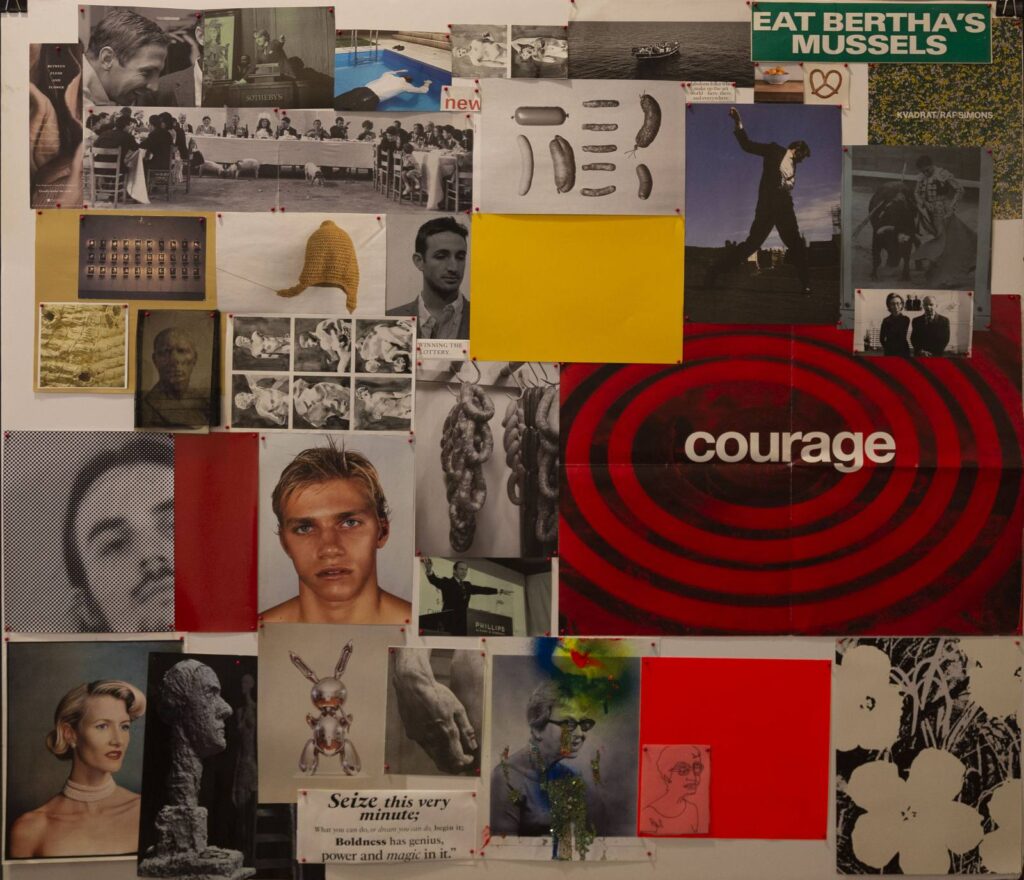
I collect hundreds of images for a few days, and I pin them all up so I can see what formal patterns emerge. I have a habit of collecting far too many images then I actually need for a project. A greater the number of images can result in information overload and that usually leads to an incomprehensible mood board. So, I find it useful to edit my collection down to a clear color palette, a coherent body of forms, textures, photographs, and illustrations, sometimes even typographic samples find their way into the collage if it’s relevant. I try to keep words to a minimum but I might include a sentence of two if I think it will help when I present mood boards to clients.
The primary goal of using mood boards in the creative process is to respond to a particular problem. This problem might be poetic as well as formal or even practical such responding to a design brief. That’s why not all images deserve to be on a mood board.
Stepping back and taking time to look and then edit images helps to clarify what the messages and feelings that I am trying to convey are. The next step is to remove half of the images in my collection, and then repeat this step until I have narrowed it down to 20-40 images that I can then compose to help tell a visual story. The goal is to have images that help you capture a clear formal language and simultaneously convey an emotional feeling.
> Use hierarchy and scale to emphasize a visual idea.
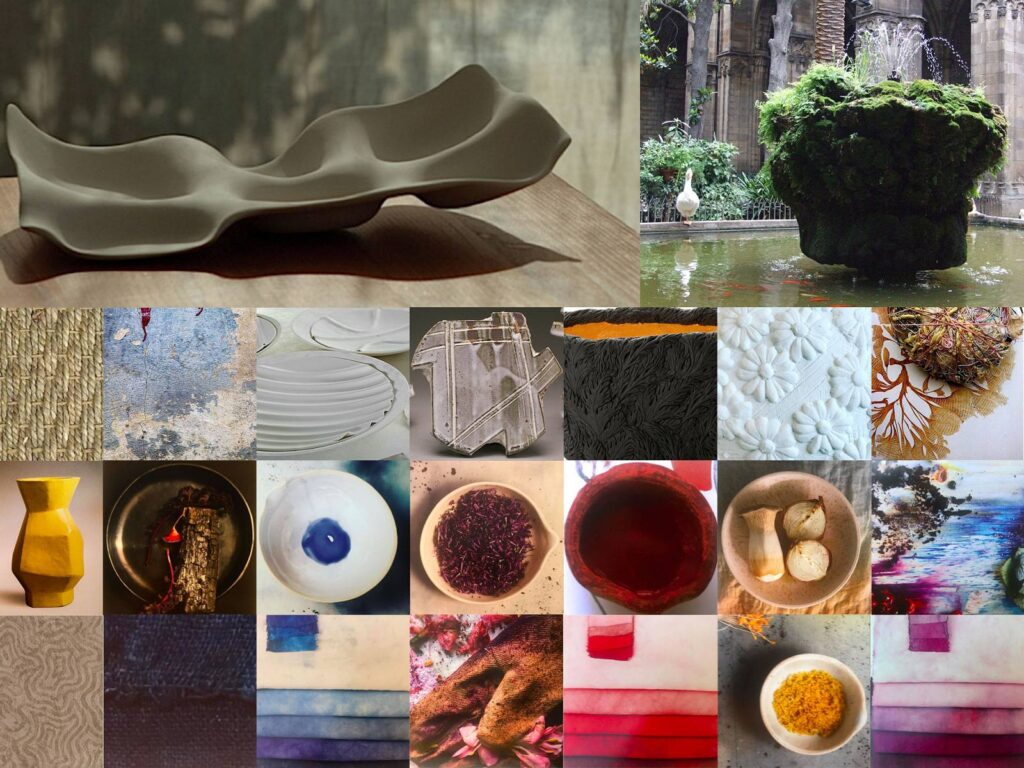
No matter what format you choose, it’s important to select images that will act as the anchor for the design. Creating a visual hierarchy through scale and juxtaposition is a good way to direct the eye. Larger images draw more attention than smaller ones. Smaller objects can complement larger ones conceptually and formally.
> Extrapolating feeling through form
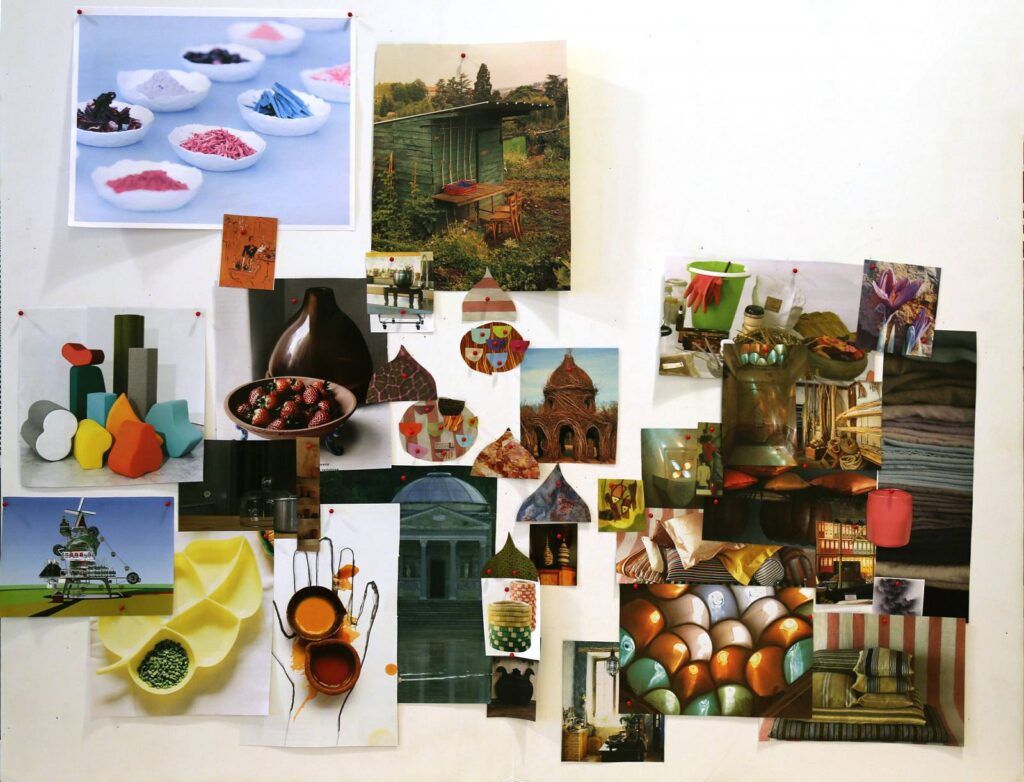
Choose images that help establish a shape, form, color, rhythm, texture, illustration or photographic style, as well as the emotional sensibility of all of these elements together.
> Expressing meaning through materials
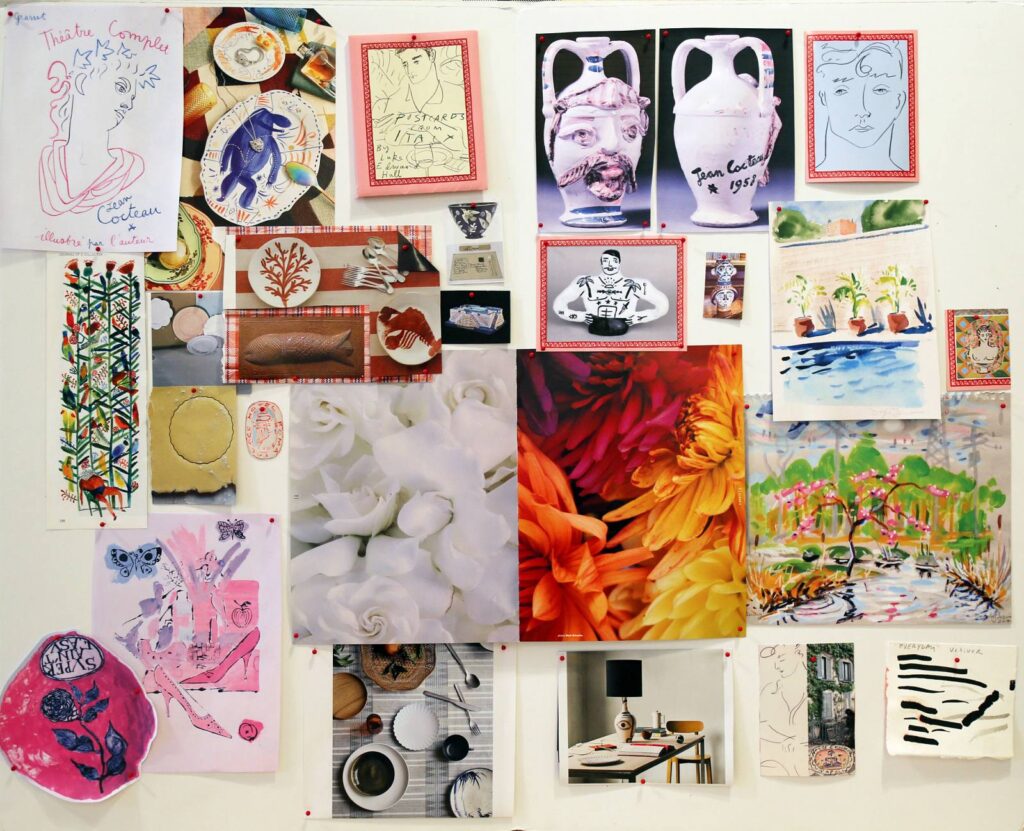
For a variety of reasons, there has been a shift in people’s relationship with materials, from design to manufacturing, with materials and making methods starting to reclaim their central role in the creative process and beginning to dictate form rather than simply adapt to it. In this digital age, this haptic impulse might be a nostalgic desire to get closer to the means of production through craft; regardless, the exploration by contemporary makers has reaffirmed the power of materials, which when used early on in the creative process, offer a sense of touch to convey emotion and impart meaning. Therefore, I make use of material samples in my mood boards and this in turn helps me to discover making methods that I might employ as the project unfolds.
> Visual Vocabulary
Sometimes a single composition can encapsulate enough information to build a visual vocabulary with. For example, this lovely snapshot of flowers by Andy Warhol captures the bold form, repetition, and happy sentiment that translated beautifully into an exuberant visual vocabulary for a body of Flower paintings.
